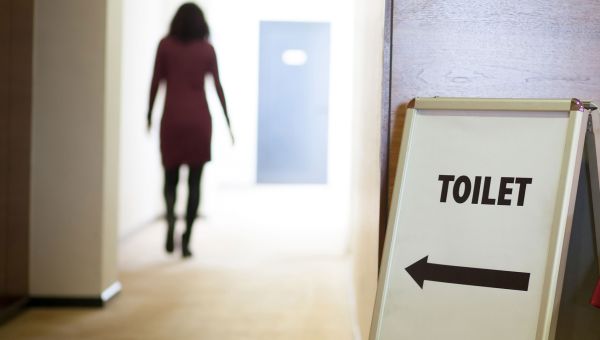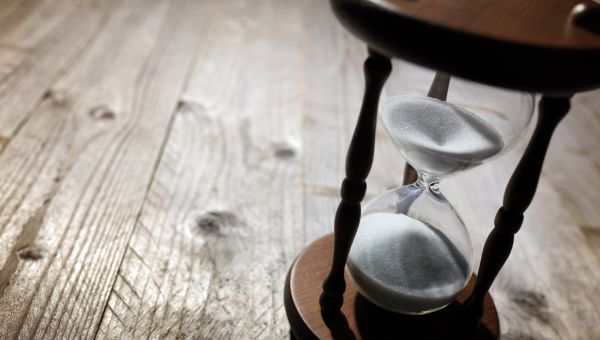5 all-natural ways to improve your bladder control
Smart tweaks to stop the leaks.
Updated on October 5, 2023

You're grocery shopping, distractedly pushing your full cart through aisle 5, when suddenly, you're seized by the need to use the bathroom—badly. Does this sound familiar? If it consistently happens at least eight times in 24 hours, you might have overactive bladder (OAB), a condition defined by the frequent, pressing urge to urinate, occasionally accompanied by leakage.
Unlike many other conditions, treating OAB often begins at home, with a combination of simple exercises, diet modifications, and behavioral strategies. Here's how to get started—after seeing your healthcare provider (HCP), of course.

Do some Kegels
The first line of defense against OAB is exercising to strengthen your pelvic floor. Your HCP will likely prescribe Kegel exercises, during which you:
- Contract your pelvic muscles as if you were trying not to urinate
- Hold that position for at least 3 seconds, and up to 10 seconds
- Release, rest a few seconds, and repeat 10 times
Do this 10 times over the course of a day, anywhere you can, to help prevent leakage. Bonus: Kegels are thought to improve your sex life and reduce the risk of female genital prolapse, in which your uterus or vagina fall out of their normal positions.

Try bladder training and scheduled voiding
Along with Kegels, your HCP might assign you a series of exercises meant to increase control of your urine. The first, bladder training, involves holding your urge to pee for a little longer each day. With practice, over time, you should be able to consistently reach a restroom to avoid accidents.
Your HCP may also recommend timed voiding—essentially, training yourself to go to the bathroom at certain times throughout the day. As you progress, you can extend the time between trips. This is especially helpful for those with a rigid schedule—like teachers, who must hold their urges until class is over—or office workers with frequent meetings.

Change your diet—and watch fluid intake
What you eat plays a big role in OAB, since certain foods irritate your bladder, worsening the need to urinate. To alleviate symptoms, try cutting back on:
- Chocolate
- Spicy foods
- Tomatoes and tomato products
- Artificial sweeteners like saccharin or aspartame
- Acidic foods like citrus fruits and vinegars
Keep a record of foods that aggravate your OAB can also be helpful; you'll know what to look out for in the future.
Fluids are an issue for people with incontinence, as well. Restrict your intake before long trips, extended meetings, or any event where you'll lack bathroom access. Don't become dehydrated, however, since it can aggravate OAB. Additionally, try to limit or steer clear of coffee, tea, alcohol, soda, carbonated drinks like seltzer, and beverages containing artificial sweeteners, all of which can stimulate your bladder.

Maintain a healthy weight
Researchers have found a connection between OAB and excess pounds; the more you carry, the higher your likelihood of developing the condition, perhaps due to added pressure on the bladder. Excess weight also increases the risk of leaking urine. That means that losing extra pounds and maintaining a healthy weight may alleviate symptoms.

Keep a bladder diary
In addition to behavioral changes, you can start recording what actions, occurrences, foods, or drinks seem to bring on your OAB symptoms. You'll keep your bladder diary—sometimes called a pee diary or voiding diary—for at least three days. In it, you'll record when and how much you urinate, along with what events precede each trip to the bathroom. The diary isn't just for your own knowledge—it will also assist your HCP in identifying what triggers your OAB, which will, in turn, benefit treatment.
Mayo Clinic. Overactive bladder. May 3, 2022.
UCUrology. Female Pelvic Organ Prolapse: Symptoms, Types, and Treatment Options. July 24, 2022.
Cleveland Clinic. Kegel Exercises. Last reviewed February 1, 2023.
MedlinePlus. Kegel exercises – self care. Reviewed January 1, 2023.
Cheryl Iglesia, MD. 5 Things I Wish All Women Knew About Pelvic Organ Prolapse. American College of Obstetricians and Gynecologists. Last reviewed December 2021.
Cleveland Clinic. Overactive Bladder. Last reviewed September 13, 2022.
University of California San Francisco. Bladder Training. Accessed October 5, 2023.
Urology Care Foundation. Ask the Experts: If I Have Incontinence, Should I Drink Less Water to Stop Leaking? Accessed October 5, 2023.
Bradley CS, Erickson BA, Messersmith EE, et al. Symptoms of Lower Urinary Tract Dysfunction Research Network (LURN). Evidence of the Impact of Diet, Fluid Intake, Caffeine, Alcohol and Tobacco on Lower Urinary Tract Symptoms: A Systematic Review. J Urol. 2017 Nov;198(5):1010-1020.
Mihalsky KP, Tran R, Moreno-Garcia F, et al. Urinary incontinence in women who have undergone bariatric surgery. Surg Endosc. 2023 Aug 16.
Rogo-Gupta LJ, Yang L, Stefanick ML, et al. Low-fat dietary pattern reduces urinary incontinence in postmenopausal women: post hoc analysis of the Women's Health Initiative Diet Modification Trial. AJOG Glob Rep. 2021 Dec 10;2(1):100044.
Urology Care Foundation. Overactive Bladder Patient Guide. 2021.
More On


video

article


video


video


video
